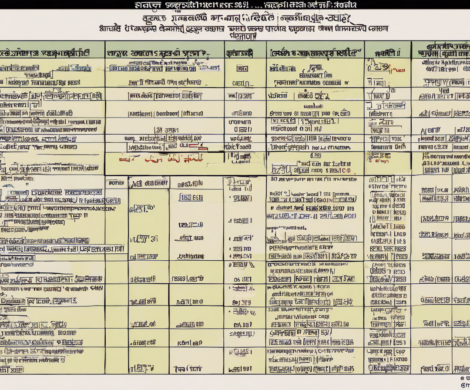Ram Aayenge: The Significance of Lord Rama’s Arrival

Introduction
Ram Aayenge, translated as “Rama will come” in English, is a phrase that holds immense significance in the Hindu faith. Lord Rama, the seventh avatar of the god Vishnu, is a central figure in Hinduism and is revered for his righteousness, courage, and devotion. The belief in Rama’s return represents hope, righteousness, and the triumph of good over evil. In this article, we will delve into the significance of Lord Rama’s arrival, exploring the mythological, cultural, and spiritual aspects that make this belief so profound.
Mythological Background
According to the epic Ramayana, Lord Rama was born in Ayodhya to Queen Kaushalya and King Dasharatha. He was exiled from his kingdom for fourteen years due to a promise made by his father to his stepmother Kaikeyi. During his exile, Rama’s wife Sita was abducted by the demon king Ravana, leading to a great war where Rama, with the help of his loyal companion Hanuman and an army of allies, defeated Ravana and rescued Sita. Upon his return to Ayodhya, Rama was crowned as the rightful king, embodying the principles of dharma (righteousness) and justice.
Cultural Impact
The story of Lord Rama and the Ramayana has had a profound influence on Indian culture and society for centuries. It has inspired art, literature, music, and dance forms, making Rama a timeless symbol of morality and virtue. The festival of Diwali, also known as the “Festival of Lights,” celebrates Rama’s return to Ayodhya after his victory over Ravana. It symbolizes the victory of light over darkness and good over evil, with people lighting lamps and fireworks to welcome Rama back home.
Spiritual Significance
In the spiritual realm, the belief in Lord Rama’s return represents the eternal cycle of birth, life, and rebirth. It signifies the idea that divine incarnations like Rama come to earth in times of darkness to restore balance and righteousness. The promise of Rama’s return gives hope to his devotees and reinforces their faith in the ultimate victory of good over evil. It serves as a reminder to lead a life of virtue, compassion, and selflessness, just as Rama did during his time on earth.
Ram Aayenge Today
In the contemporary world, the belief in Lord Rama’s return has taken on new forms and meanings. Many Hindus still hold onto the hope that Rama will come back one day to establish a reign of peace and prosperity on earth. This belief serves as a source of solace and inspiration in times of turmoil and uncertainty, reminding people to stay true to their values and principles.
Ram Rajya: The Ideal Kingdom
The concept of “Ram Rajya,” often translated as the “Kingdom of Rama,” refers to an ideal state of governance based on justice, equality, and harmony. It is believed that during Rama’s rule, Ayodhya prospered and thrived due to his just and fair leadership. The idea of Ram Rajya continues to inspire political thinkers and leaders, emphasizing the importance of ethical governance and the welfare of all citizens.
Ram Navami: Celebrating Rama’s Birth
Ram Navami is a Hindu festival that commemorates the birth of Lord Rama and is celebrated with great reverence and enthusiasm. Devotees worship Rama and recite hymns and prayers in his honor, seeking his blessings for a virtuous life. The occasion is marked by fasting, feasting, and charitable acts, symbolizing the values of sacrifice and devotion exemplified by Rama.
Ram Aayenge in Literature and Art
The theme of Lord Rama’s return has been a popular subject in Hindu literature and art. The Bhagavad Gita, one of the most sacred texts in Hinduism, alludes to the concept of divine incarnations like Rama coming to earth to uphold righteousness. Artists and poets have depicted Rama’s arrival in various forms, capturing the essence of hope, valor, and divine grace.
Ram Aayenge: A Symbol of Hope
In conclusion, the belief in Ram Aayenge embodies the eternal hope and faith that good will always prevail over evil. It symbolizes the victory of righteousness and truth, inspiring devotees to lead a life of virtue and compassion. Lord Rama’s story continues to resonate with people of all ages and backgrounds, serving as a beacon of light in a world filled with darkness and despair. May we all strive to emulate Rama’s virtues and welcome his arrival with open hearts and minds.
Frequently Asked Questions (FAQs)
1. Will Lord Rama really come back to earth?
– The belief in Lord Rama’s return is a spiritual and mythological concept, symbolizing the victory of good over evil. Whether Rama will physically return to earth is a matter of faith and interpretation.
2. What is the significance of chanting “Ram Naam” (the name of Rama)?
– Chanting the name of Rama is considered a powerful spiritual practice that helps devotees cultivate inner peace, purify the mind, and seek divine protection. It is believed to bring blessings and guidance from Lord Rama.
3. How can one emulate Rama’s virtues in daily life?
– One can emulate Rama’s virtues by practicing honesty, compassion, selflessness, and humility in all aspects of life. Following the principles of dharma and righteousness, as exemplified by Rama, can help individuals lead a more fulfilling and meaningful life.
4. Why is Rama considered an ideal king in Hindu mythology?
– Rama is considered an ideal king in Hindu mythology due to his unwavering commitment to dharma, justice, and the welfare of his subjects. His fair and just rule in Ayodhya is a testament to his qualities of leadership, integrity, and compassion.
5. How does the story of Lord Rama inspire people around the world?
– The story of Lord Rama inspires people around the world by showcasing the power of virtue, devotion, courage, and sacrifice. His journey from exile to victory over evil serves as a timeless tale of hope, resilience, and the triumph of good over evil.






